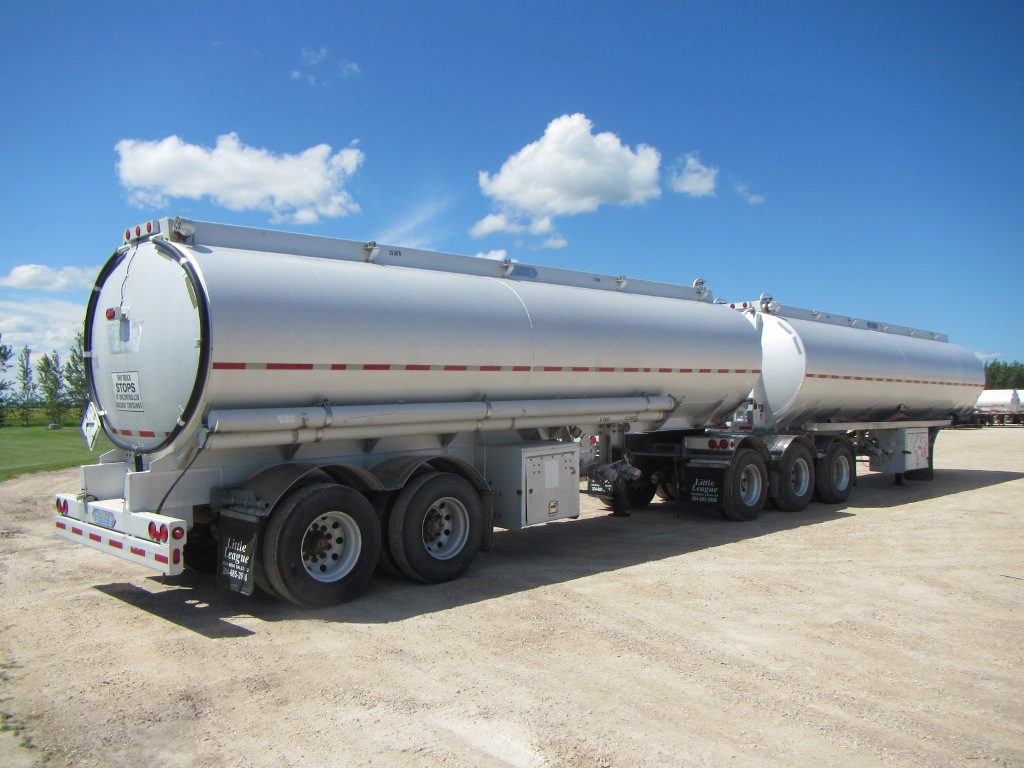In the road transport or trucking industry, a B–train, Super B, trains etc depending on what part of the country you are in consists of two trailers linked together by a fifth wheel, and are up to 26 m (85 ft) long.
The B train trailer can be a 62 000 liter Petroleum unit with/ 6-compartment Lead and Rear Trailer ‘B’ combination, a 2950 Cubic feet dry bulk unit, 11,500 USG Chemical trailer, 21,000 uswg LPG Super B-train, or a flatbed combination.
These combinations are used sometimes by LTL carriers, where the axles of the lead trailer slide from underneath the lead trailer so it can back into a door just like a regular trailer. Food companies and Petroleum companies use this type of trailer as well to extend their distribution network. A set of two can be pulled, usually overnight, to a city within 500 miles of the distribution center. Then, the trailers are broken up and are taken by two fresh drivers for deliveries to restaurants and their other customers. Petroleum companies can deliver multiple types of fuel and do one stop replenishments with their equipment.
The B –Train combination is also very popular for hauling flatbed, bulk and liquid goods in Canada and some US states. Because these types of operations usually don’t require backing up into a dock, drivers will generally only drive forward, making it easier. However, most drivers that pull these on a regular basis can back them up fairly well, even into a dock or around a corner. The 8 axle, 63,500 kg B Train is a standard across Canada.


Recent Comments